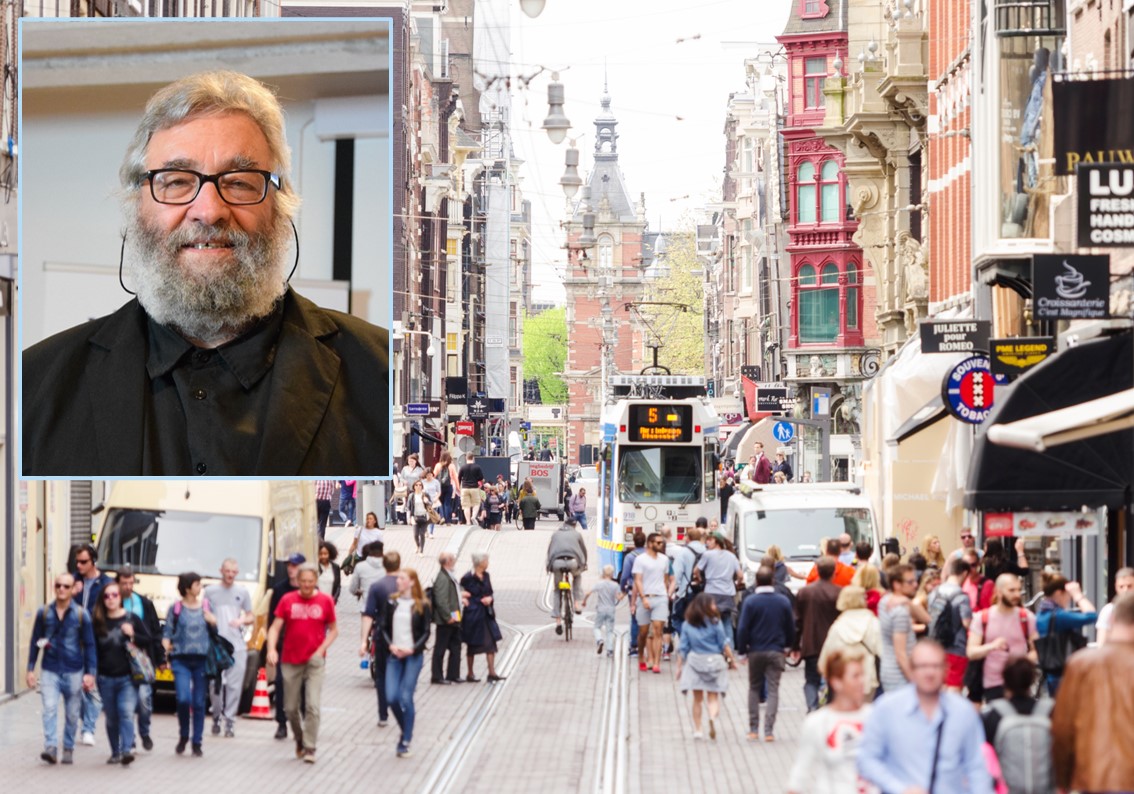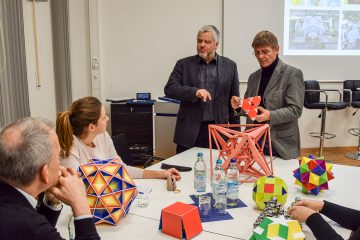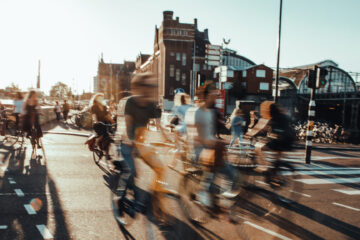acatech am Dienstag: How do we design liveable cities of tomorrow?

Munich, 04 March 2024
To make the “liveable city” a reality, we need a change in mobility behaviour, technological innovations – and integrated urban development. After all, urban spaces do not only have an impact on climate and sustainability, but also on social justice. On 27 February, acatech member and mobility researcher Klaus J. Beckmann explained at acatech am Dienstag, which was held in Ottobrunn in cooperation with vhs.wissen live how urban spaces can be developed into multifunctional living spaces.
Mobility and urban development
The future of mankind lies in the city: in 2023, more than half of the world’s population will already be living in cities; in Germany, more than 50 million people live in large and medium-sized cities. During his presentation at acatech am Dienstag on 27 February, acatech member Klaus J. Beckmann cited even more impressive figures: 80 per cent of global GDP is produced in cities, but they are also responsible for 70 per cent of energy consumption, 75 per cent of CO2 emissions and 75 per cent of waste.
In light of these developments, Klaus J. Beckmann believes it is necessary to think about new forms of housing and a redesign of both buildings as well as water and green spaces. After all, the way we use land has a direct impact on the climate and sustainability and is therefore an aspect of social justice, according to the mobility researcher. As head of the acatech project “Integrated Urban Development and Mobility Planning”, the results of which were presented in February, Klaus J. Beckmann advocates for a new mobility culture: Mobility is not just a means to cover a distance, but an opportunity for social participation and involvement. Accordingly, spatial and transport development must be considered in an integrated manner.
German cities are increasingly suffering from density-related stress and the consequences of global warming. According to Klaus J. Beckmann, it is only possible to solve these problems through close cooperation across all federal levels and between different planning authorities. It is worth taking a look abroad to see how this cooperation can be organised: cities such as Paris or Vienna show how processes need to be coordinated and how the target image of the “liveable city” can be approached.
Looking abroad: What are the neighbouring European countries doing?
Vienna
Seestadt Aspern, a district of the Austrian capital Vienna, is an innovative urban development project that has provided living space for more than 25,000 people and over 20,000 jobs and apprenticeships since 2014. This city combines a high quality of life with environmental awareness and economic strength.
Copenhagen
The city has been promoting cycling for decades and is recognised by experts as the world’s most bike-friendly city. It offers numerous conditions for a pleasant cycling experience: a densely populated urban area with numerous destinations within a short distance, flat terrain, an extensive network of well-developed infrastructure, especially for flowing cycle traffic, consisting of cycle paths along roads, mostly separated from the carriageway, but also through green spaces.
Barcelona
In the L’Eixample district, the streets have been widened and the junctions generously expanded. The blocks were bevelled at the corners to make the junctions clearer. Urban planning is based on a networking concept that combines the most important features of a modern city: mobility and communication.
Paris
At rush hour, the city is choked with traffic, traffic jams are the norm and public transport is overcrowded. Around four million people commute from the suburbs to Paris every day or have to cross Paris to get to work. Almost 60 per cent of them use the car. To combat excessive car use, there are plans to transform the capital into a city in which all major destinations can be reached in 15 minutes.
The acatech research project 'Integrated Urban Development and Mobility Planning'
The acatech project Integrated Urban Development and Mobility Planning shows that integrated planning of spatial structures and mobility can favour an ecologically, economically and socially sustainable design of our everyday mobility. The central aim is to create diverse and climate-resilient cities with short distances and good public transport connections. An integrated approach takes into account the interactions between spatial structures and mobility and relies on co-operation and professional synergies between politics, administration, society, business and science.
The results of the acatech research project have been published in a study entitled „Ankommen statt unterwegs sein“ (Reaching success). It sees streets as living spaces and cites Paris as a role model – because the French capital has significantly reduced car traffic. Cities that not only improve their traffic (for example with electric drives) and shift it (from cars to alternative modes of transport), but also reduce it, would be fit for the future. Less traffic, but more mobility is the goal: citizens should be able to reach their destinations with shorter journeys, increasingly on foot or by bike – for example according to the concept of the 15-minute city.
Further information
www.acatech.de/stadtentwicklung-mobilitaetsplanung (in German)





